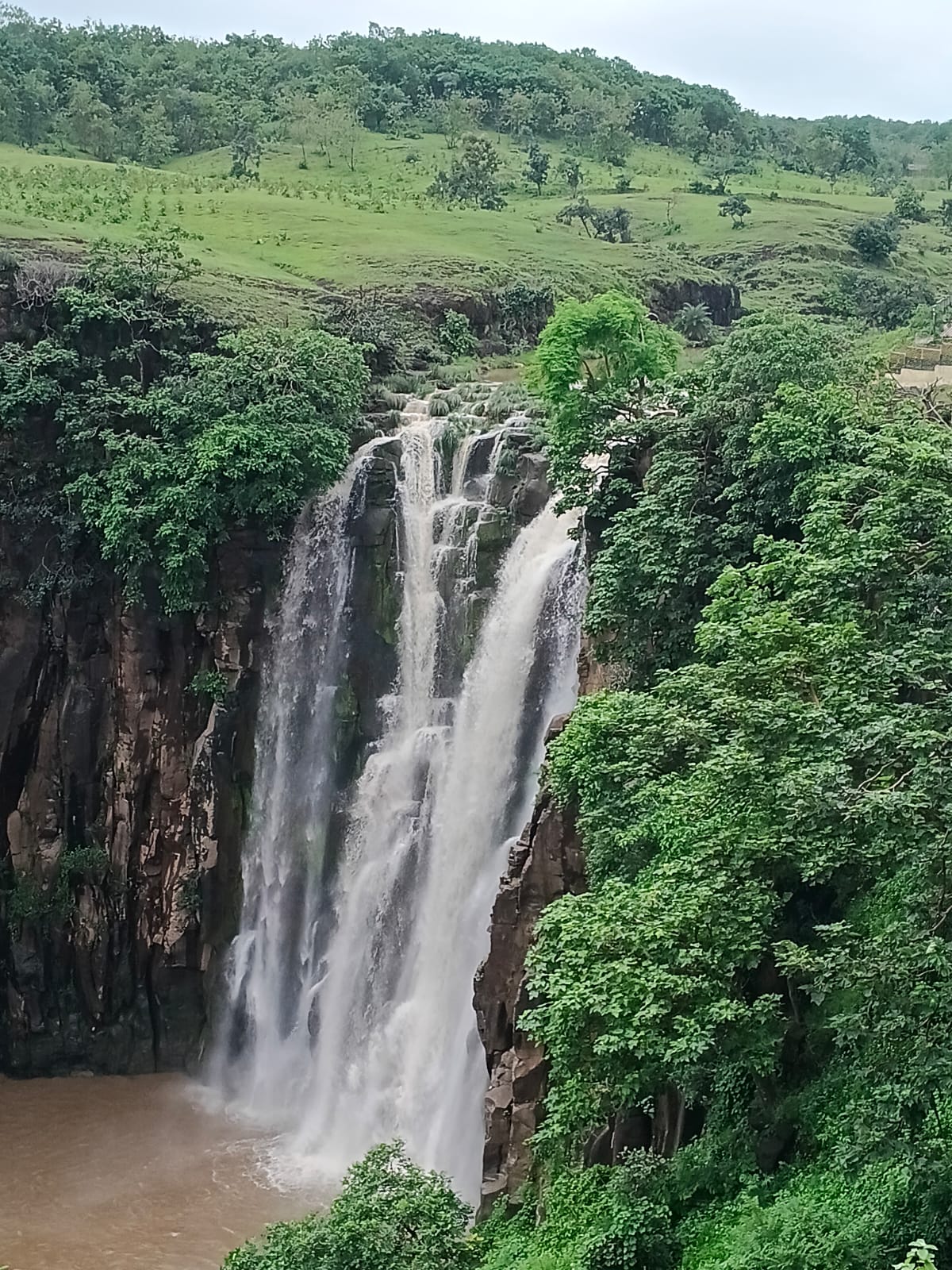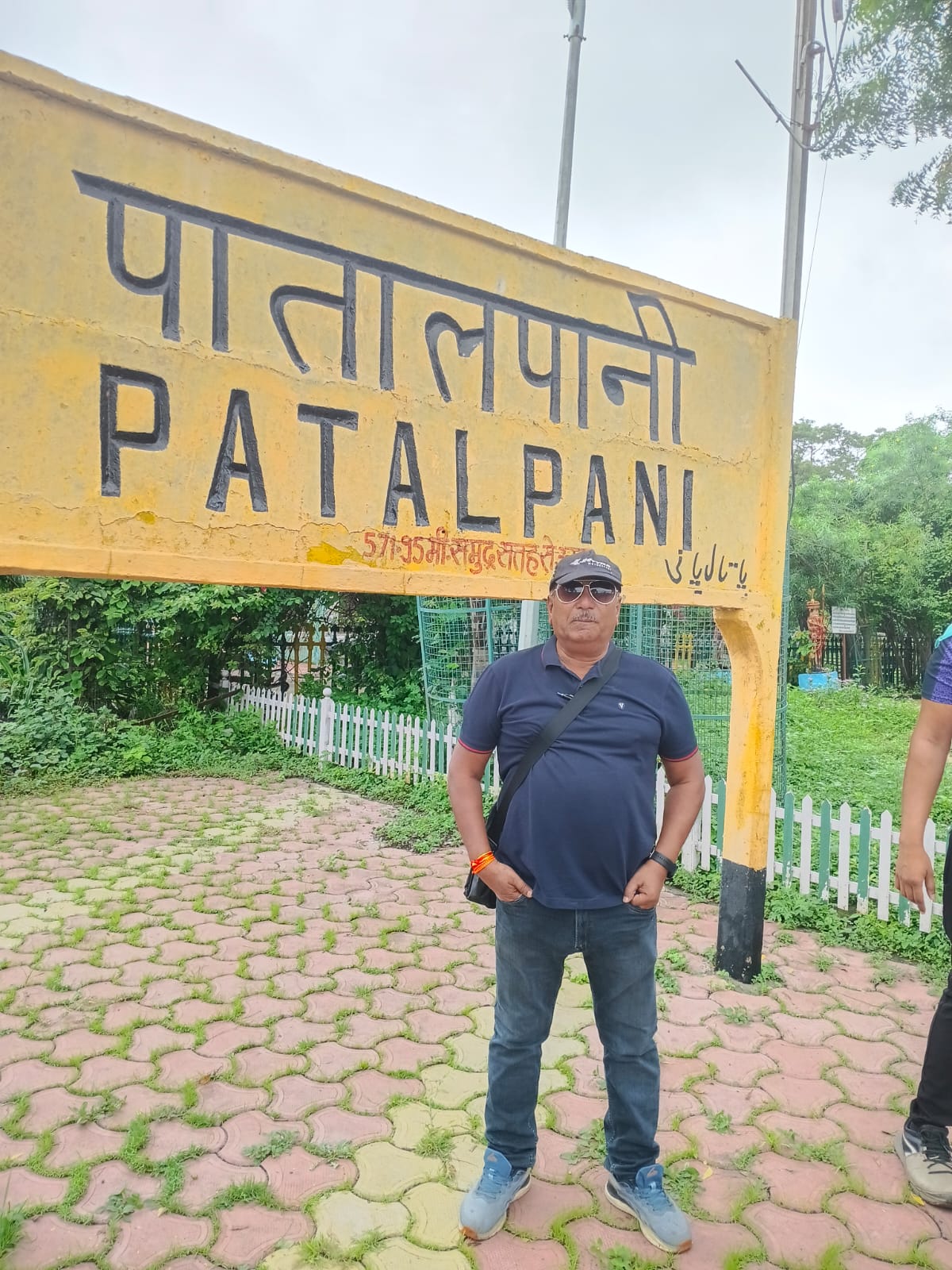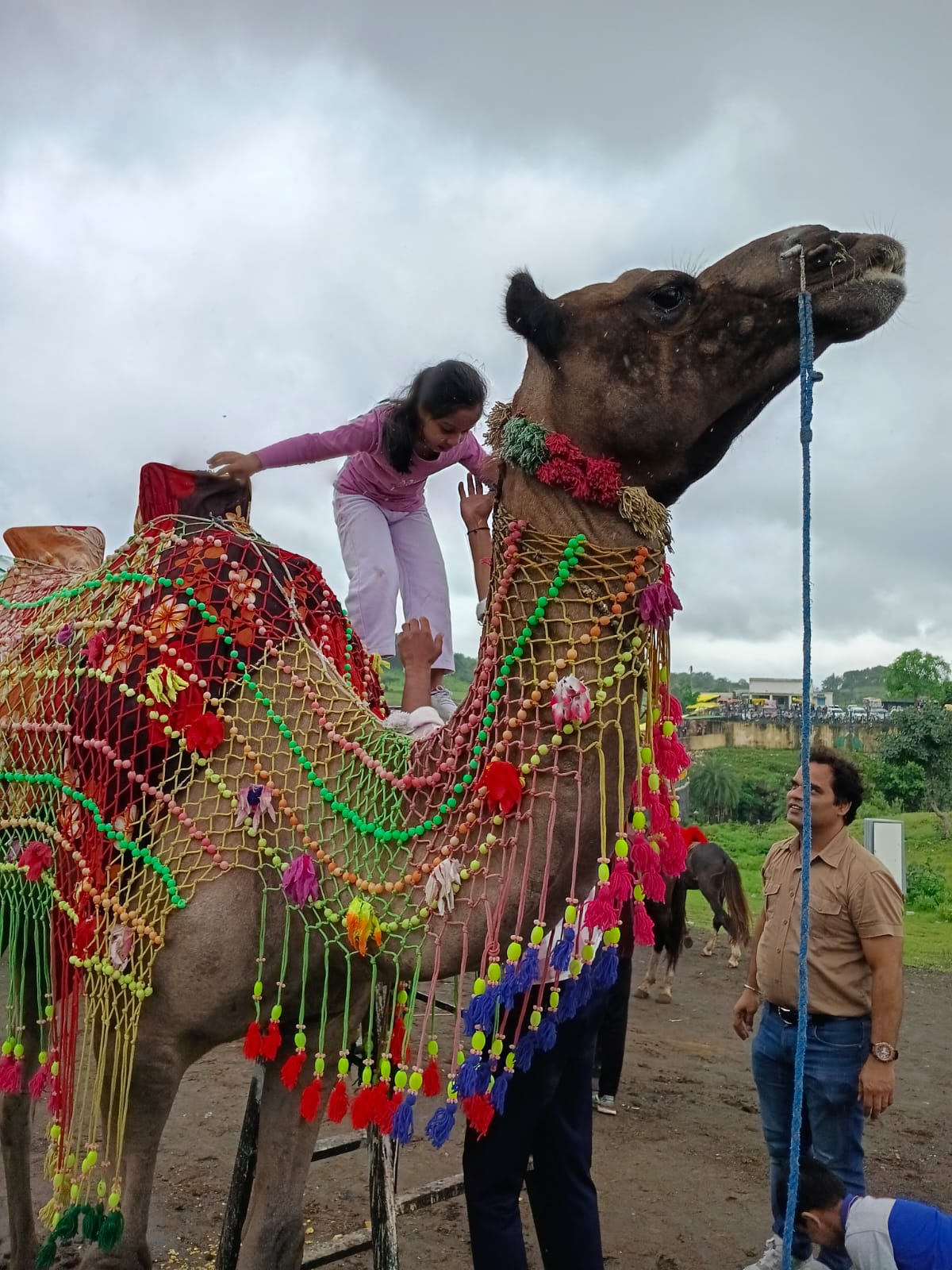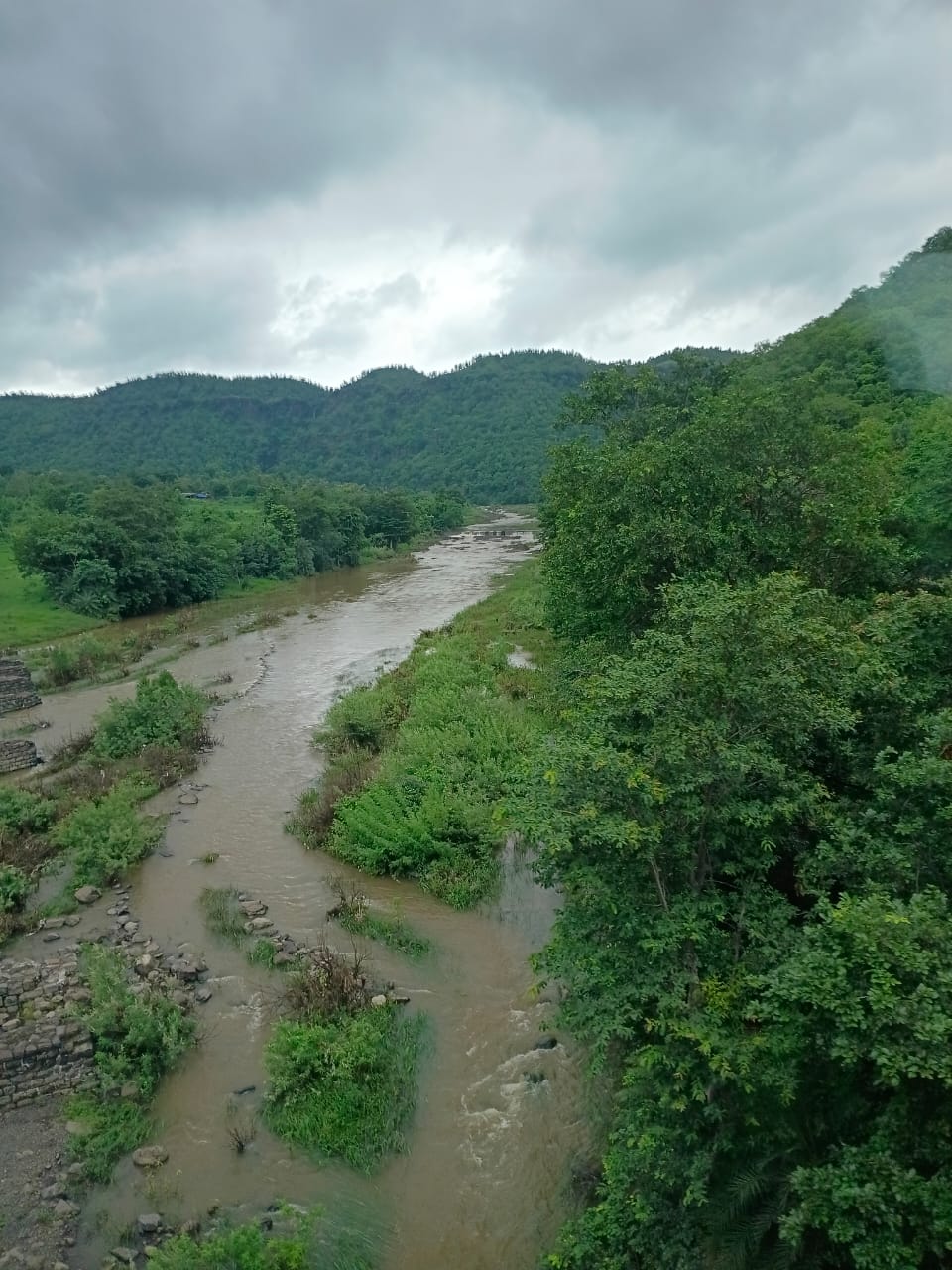
Arun Kumar Das/Patalpani
A 9.5-km-long heritage train journey from Patalpani to Kalakund near Indore in Madhya Pradesh is fast emerging as a major tourist attraction.
Last Sunday, a six-coach train fitted with Vistadome coaches carried 400 passengers through a scenic route dotted with lush hills, cascading waterfalls, dense forests, rivers, tunnels, and bridges. The steady drizzle added a magical touch to the ride.
 Patalpani waterfall
Patalpani waterfall
“Waterfall, waterfall… Mummy, see the waterfall!” exclaimed six-year-old Darshika as she spotted a torrent of water gushing down a cliff, the view visible through the large glass windows of the slow-moving coach cruising at 20 kmph.
Darshika wasn’t alone in her wonder. Passengers of all ages were equally mesmerized by the sounds of flowing streams and the sight of fully grown trees blanketing the hills in a thick green canopy.
 Patalpani station, Madhya Pradesh
Patalpani station, Madhya Pradesh
For Darshika and her mother, Anshika, it was their first ride on a Vistadome coach along a heritage rail route. “I’m so glad we planned this trip. Seeing my daughter thrilled by the scenery makes it a perfect Sunday outing,” said Anshika with a smile.
The train made its first stop at the iconic Patalpani Waterfall, where passengers had 40 minutes to enjoy the view, according to Train Ticket Examiner Narendra Chandel.
A bustling mini-market greeted them, with food stalls doing brisk business. “We didn’t bring any food with us. We’ll try the local food here,” said Vishal and Nandini, a young couple from Sheopur, as they munched on hot bhutta (corn on the cob).
.jpeg) View from the last stoppage from the train
View from the last stoppage from the train
“Our sales depend entirely on these train passengers. Sundays are the best for business,” said Geeta Bai, who sells corn by the waterfall.
Nearby, a tea and pakoda stall was run by Pinky and her two sons, Ayush and Alpesh. “They help out on weekends when the crowd is bigger,” she said while serving piping hot snacks on leafy plates.
For those looking for a touch of adventure, horse rides were on offer. “It’s ₹50 for a five-minute ride,” said Arahan, one of the 12 horse owners operating near the falls.
Soon, the whistle blew, and passengers scurried back to their coaches. The train resumed its journey, accelerating back to 20 kmph. A loud roar soon enveloped the train as it entered a half-kilometre-long tunnel — the first of four on the nearly 10-km route. The track also features 24 sharp curves and 41 bridges, including six major and 35 minor ones, each a marvel of engineering.
 A child enjoying the camel ride at Patalpani
A child enjoying the camel ride at Patalpani
The next halt was the Heritage Bridge and Viewpoint, where passengers disembarked to walk on the narrow bridge and take in the breathtaking vistas. Many headed toward Valley View Point, offering panoramic views of green-clad hills.
The train then stopped at the Check Dam, offering another scenic spectacle — the Choral River in full monsoon flow. “It’s picnic time for us!” exclaimed a group of nine young professionals from Bhopal. “We’ve planned a great party at Kalakund today.”
At Kalakund, the final stop, passengers had over two hours to explore. The riverside offered stunning views and relaxing picnic spots. “There are four halts in total between Patalpani and Kalakund,” a railway officer informed. “Each one lets passengers soak in the beauty of waterfalls, check dams, and forested landscapes.”
.jpeg) People gathered at the riverbed at Kalakund
People gathered at the riverbed at Kalakund
Beyond the Patalpani waterfall, a steep trail leads to the Tantya Bhil Mama Temple, perched atop a hill. At Kalakund’s foothill, across the river, stands an ancient Hanuman temple. “But since the river is in full flow, crossing it isn’t safe right now,” said Kanhiya, a local vendor serving tourists near the site.
Some more adventurous travelers came prepared for the nearby Trekking Trail. “We packed our own food and water and returned in time for the train,” said the group leader, adjusting his backpack.
 View from the train
View from the train
This heritage train between Patalpani and Kalakund was launched by Western Railway’s Ratlam Division in December 2018 to meet the growing tourist interest. But it could not continue and has now been fully restored to run on the weekends. Indian Railways had declared the Patalpani–Kalakund meter-gauge section a Heritage Section that same year.
To enhance the travel experience, the Ratlam Division introduced air-conditioned Vistadome coaches with wide window panels and trailing windows for a panoramic view. Toilets were upgraded and coaches aesthetically decorated with PVC panels. These touches have made the journey not just comfortable but also visually pleasing.
.jpeg) A picture from the bridge, Patalpani
A picture from the bridge, Patalpani
Train operations on this route generally resume in June or July, once the heat subsides. During peak summer, services are temporarily suspended due to low tourist footfall.
Since its inception, the heritage train has seen a flood of rail enthusiasts and tourists capturing selfies with the beautifully refurbished coaches, stations, and diesel engines. The meter gauge coaches and locomotive have been tastefully restored to match the charm of the natural surroundings. Notably, this line is nearly 160 years old.
 Temporary foodstuffs at Patalpani
Temporary foodstuffs at Patalpani
The route owes its origins to Tukoji Rao Holkar II, who had envisioned a railway line between Indore and Khandwa. After a six-year wait for British approval, the ₹1 crore project — financed at a 4.5% interest rate — was sanctioned and completed between 1870 and 1878. The line later became part of the North–South rail link between Jaipur and Secunderabad.
In 2008, the Union Government approved gauge conversion of the Ratlam–Dr. Ambedkar Nagar–Khandwa section. The Ratlam–Patalpani stretch is now complete, and work on the Patalpani–Omkareshwar Road stretch is nearing completion. The Patalpani–Kalakund route, meanwhile, has been preserved as a heritage segment.
With its stunning waterfalls, Choral Valley vistas, dense flora and fauna, and historical sites, this heritage rail route is increasingly being considered an ideal film and photography location. Trekking and camping around Kalakund have also become popular, confirmed a caterer who regularly receives orders from adventure groups.
Moreover, the route is rich in tribal heritage and local culture — adding depth to the travel experience and boosting tourist numbers.
READ MORE: 10 Muslim personalities who shaped Indian film industry
There’s something timeless about train journeys — the rhythmic clatter of wheels, scenic bridges, tunnels, and a promise of nostalgia. This heritage route manages to capture it all, leaving passengers with memories that linger long after the journey ends.
